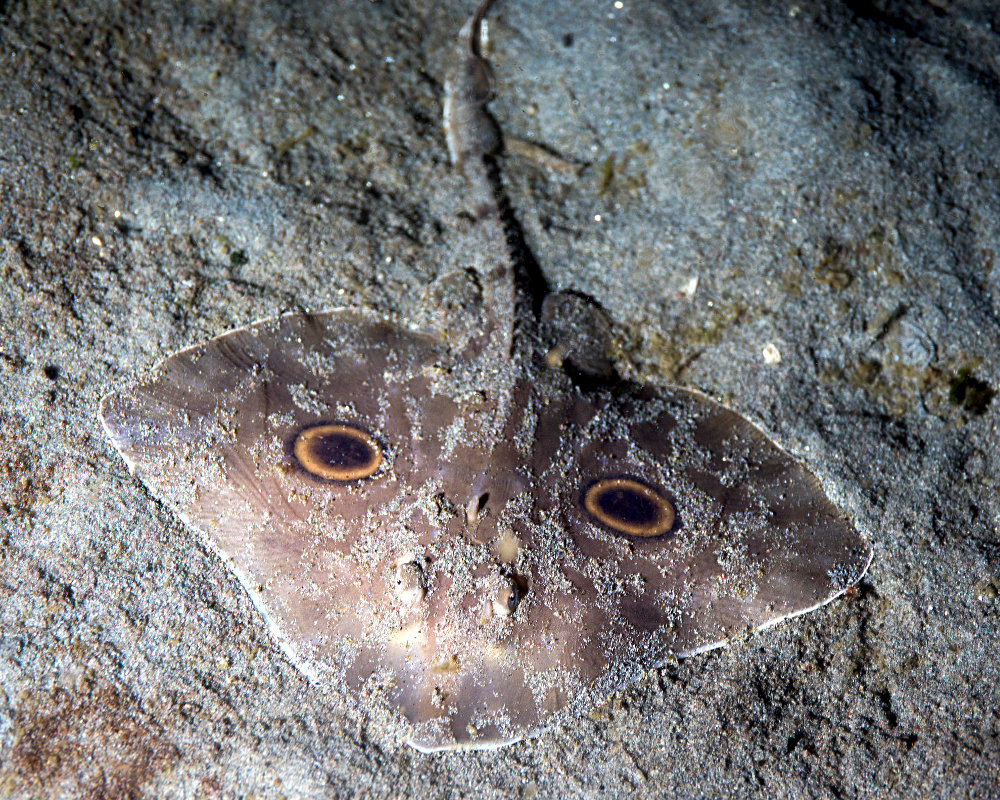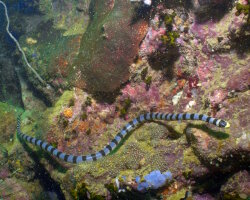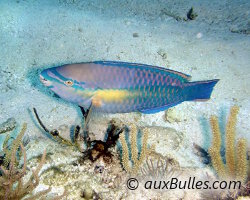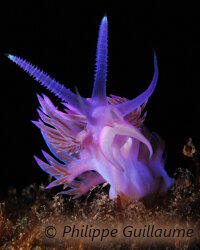Sealife guideThe big skateRaja binoculata
Last updated on 07/06/2025 at 10:44 PM
The big skate is one of the largest species of its genus and one of the most distinctive skates along the northeastern Pacific coast. This bottom-dwelling species is easily recognized by two large, dark eyespots on its dorsal surface that resemble prominent eyes.
Taxonomy
- Common name: Big skate
- French name: Raie géante à deux yeux
- Spanish name: Raya bruja gigante
- Scientific name: Raja binoculata (Girard, 1855)
- Family name: Rajidae
- Order name: Rajiformes
- Class name: Elasmobranchii
Description
The big skate can reach a total length of 5.9 to 6.6 feet at full maturity, although most observed specimens typically measure between 3.3 and 4.9 feet in length.
Their flattened bodies are diamond-shaped, with broad pectoral fins fused to the head. The tail is relatively slender and bears two small dorsal fins.
Its dorsal coloration is typically grayish-brown with a mottled pattern, while the ventral side is noticeably lighter. The big skate is especially distinguished by two large, dark eyespots on its dorsal surface that resemble prominent eyes, hence its common name.
Geographic range
The big skate is widely distributed along the northeastern Pacific coast of North America, ranging from the cold waters of the Gulf of Alaska down to Baja California.
Habitat
The big skate primarily inhabits sandy, muddy, or gravelly bottoms at depths ranging from 50 to 2,625 feet, although it is most commonly found between 165 and 655 feet.
Diet
The big skate is a carnivorous species that feeds primarily on small demersal fish, crustaceans such as shrimp and crabs, as well as mollusks. It hunts by sucking its prey out of the substrate using its ventrally located mouth.
The presence of two dark eyespots on its dorsal surface likely serves as a defense mechanism, helping to deter potential predators.
Reproduction
The big skate is oviparous. Females lay eggs encased in tough, leathery capsules known as « mermaid’s purses raquo;, which measure approximately 5 to 10 inches in length. After an incubation period that can last several months depending on the surrounding water temperature, fully formed juvenile skates emerge from the capsules.
Within the same genus
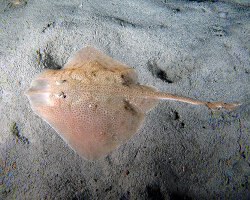
Thornback ray
(Raja clavata)
Discover also
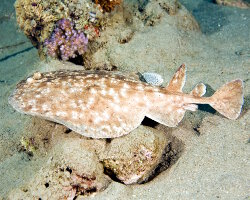
Blackspotted electric ray
(Torpedo fuscomaculata)

Darkspotted stingray
(Himantura uarnak)
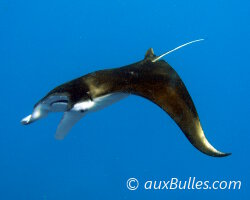
Giant manta
(Mobula birostris)
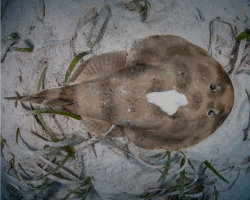
Lesser electric ray
(Narcine bancroftii)
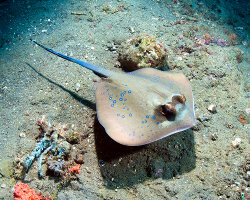
Ribbontail stingray
(Taeniura lymma)
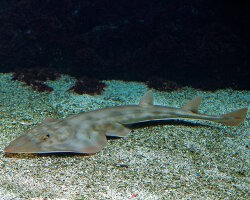
Shovelnose guitarfish
(Pseudobatos productus)
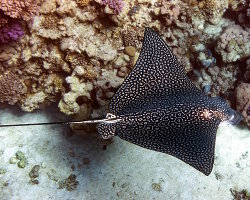
Spotted eagle ray
(Aetobatus ocellatus)
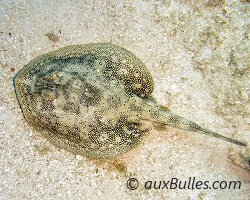
Yellow stingray
(Urobatis jamaicensis)
The marine species from northeastern Pacific ocean
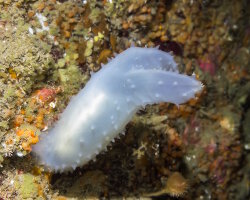
Glassy tunicate
(Ascidia paratropa)

Heart crab
(Phyllolithodes papillosus)
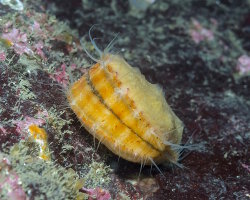
Spiny pink scallop
(Chlamys hastata)
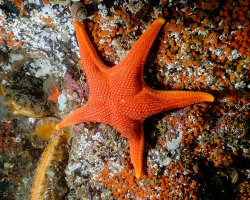
Vermillion sea star
(Mediaster aequalis)





